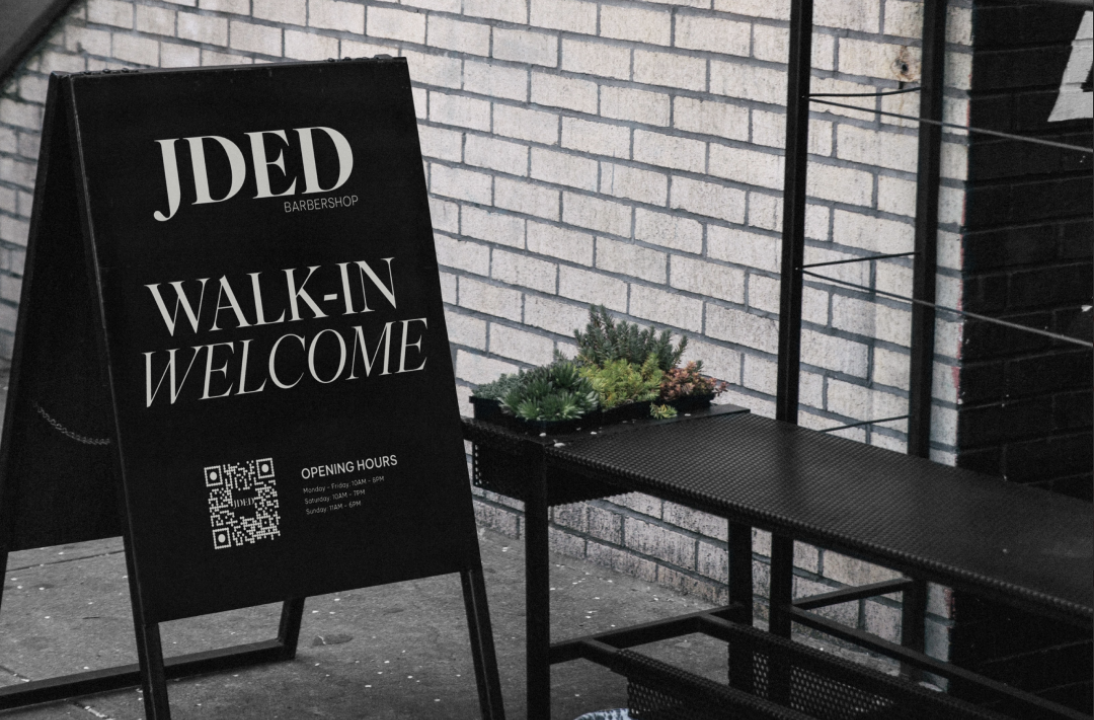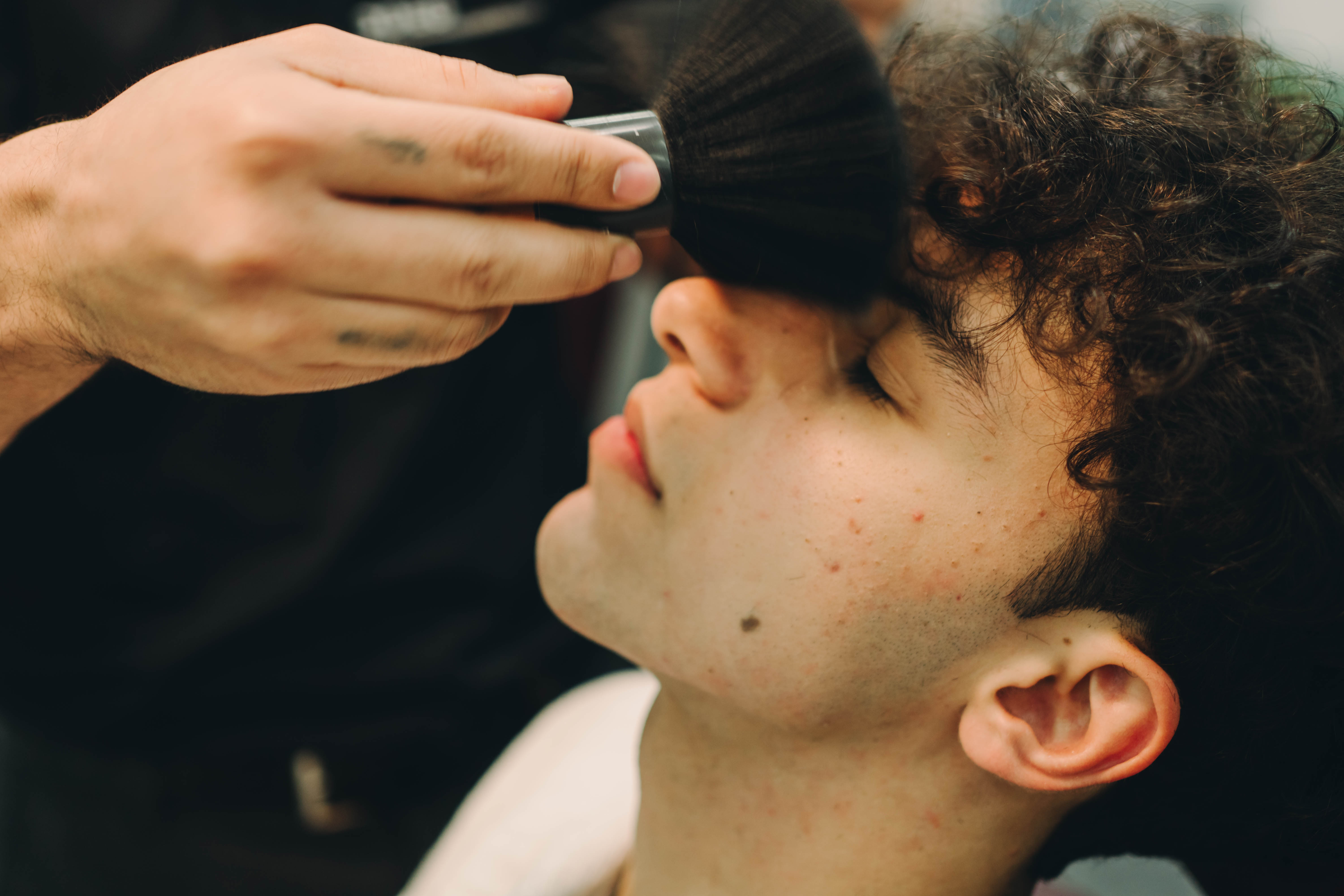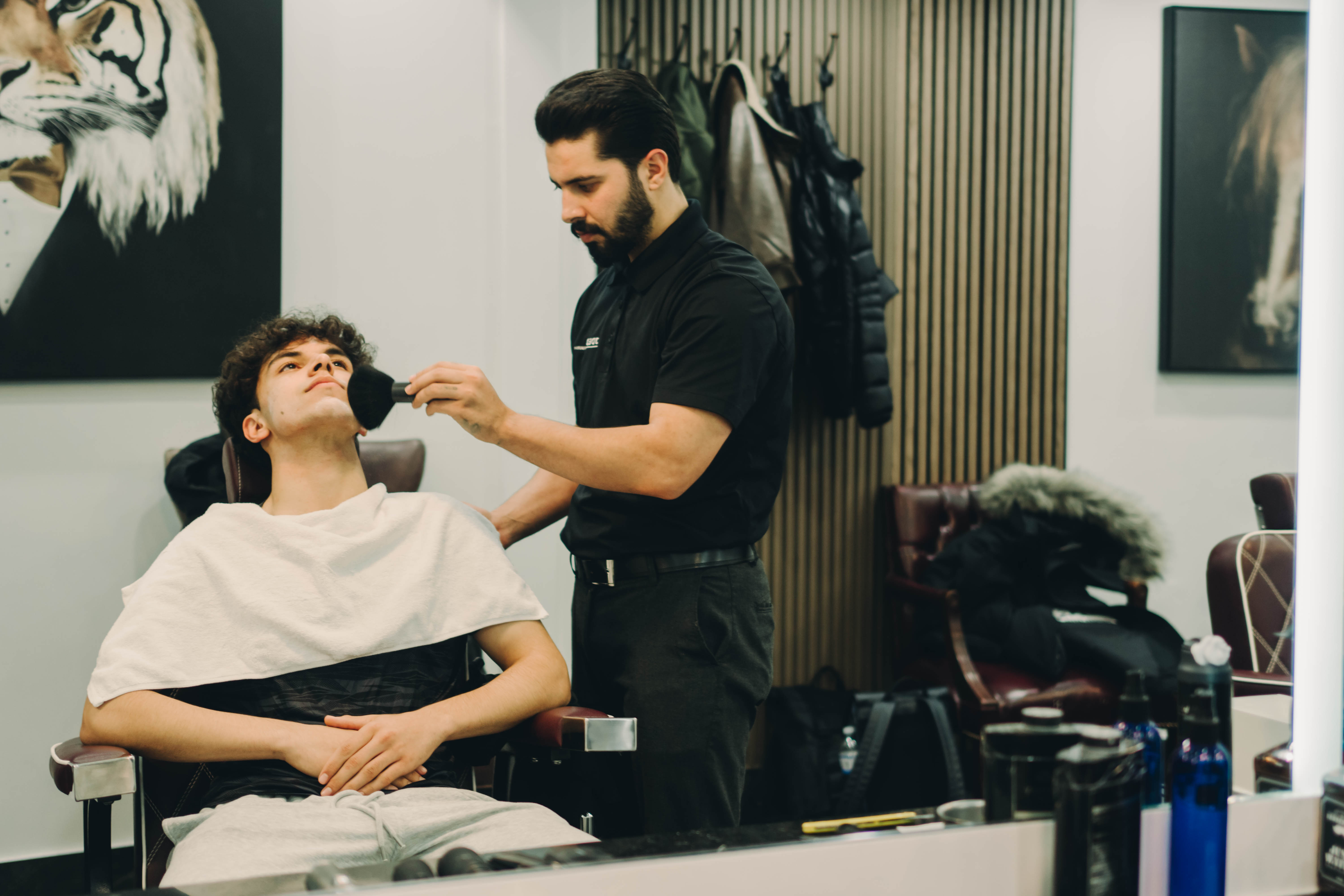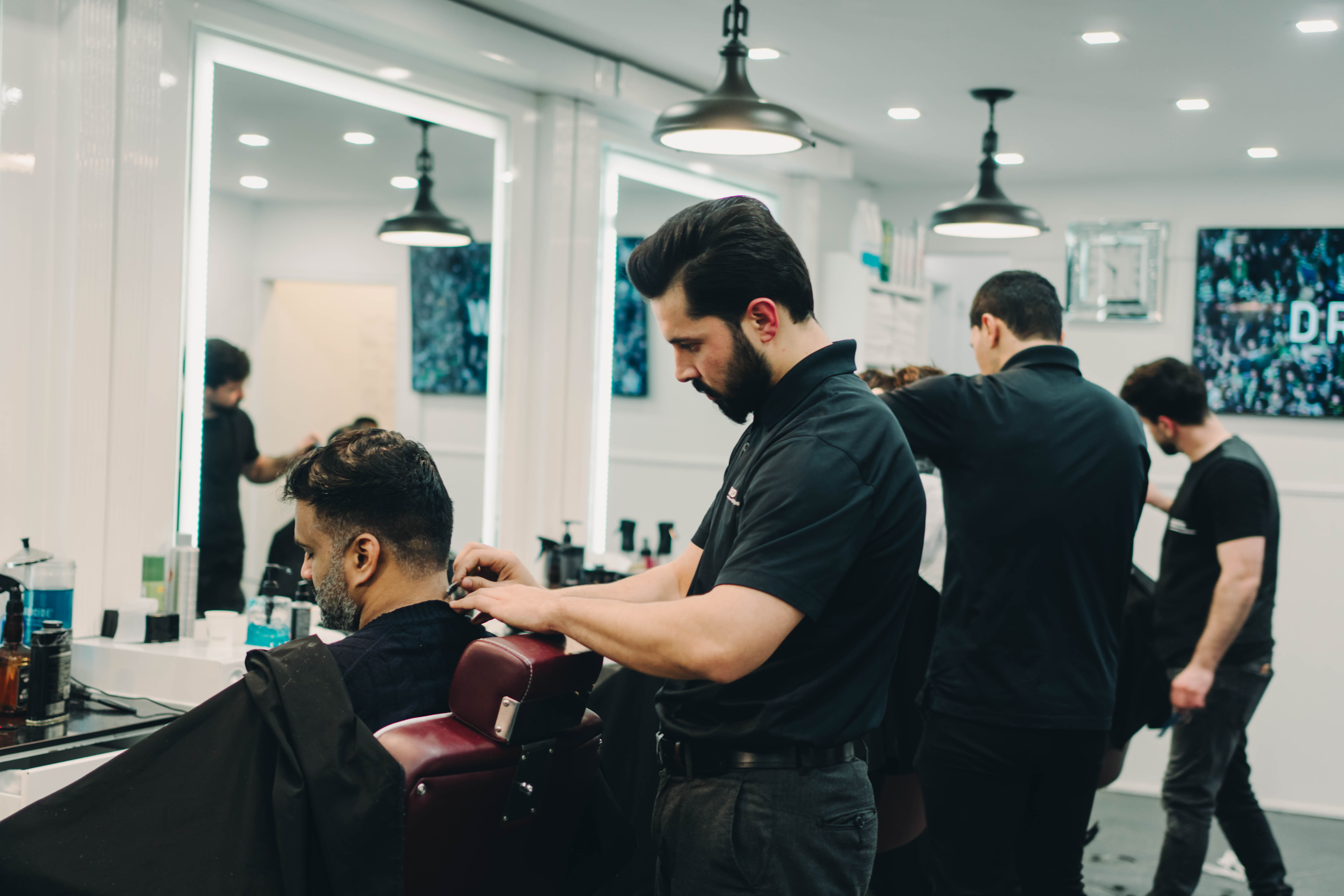Every September, the same thing happens across Toronto. Guys who looked sharp all summer suddenly appear disheveled and unkempt. Their hair looks too long, too short, or just... wrong for the season. The problem isn't their barber or their styling routine – it's that they're ignoring the most important rule of seasonal hair transitions.
Here's the rule: Your summer haircut cannot become your fall haircut without intentional adjustment.
Most Toronto men treat haircuts like oil changes – get one when needed, don't think about it otherwise. But hair grows continuously, and Toronto's dramatic seasonal shifts require strategic planning. Ignore this rule, and you'll spend September and October looking like you forgot to get a haircut or like you got the wrong one entirely.
Why Summer Cuts Fail in Fall
Summer haircuts in Toronto are designed for specific conditions: humidity, heat, outdoor activities, and minimal styling time. They're typically shorter, easier to manage, and built to handle sweat and frequent washing.
But Toronto's fall weather changes everything. Humidity drops. Indoor heating starts. You're wearing different clothes, spending more time indoors, and your daily routine shifts from summer mode to professional mode.
That short summer cut that looked perfect in July becomes awkward stubble by late September. The longer summer style that handled humidity well suddenly looks limp and lifeless when Toronto's dry fall air hits.
The texture changes too. Summer hair tends to be drier from sun exposure and frequent washing. Fall hair needs different moisture levels and responds differently to products. What worked in August feels wrong in October, even if you're using the same styling routine.
Your lifestyle shifts create additional challenges. Summer hair needs to survive beach days, cottage weekends, and outdoor festivals. Fall hair needs to work for back-to-work meetings, networking events, and the return to Toronto's professional social scene.
The Growth Math Nobody Explains
Here's what most barbers won't tell you: hair grows approximately half an inch per month, but not evenly. Different areas of your head have different growth rates, and seasonal changes affect these rates.
If you got a summer cut in early July, by late September you're looking at 10-12 weeks of growth. That short summer style is now a medium-length fall style, but it wasn't designed to look good at that length.
More problematically, the shape that worked at the original length doesn't work at the new length. Your summer cut might have had short sides and a slightly longer top. After three months of growth, you now have medium sides and long top – proportions that create an unbalanced, awkward look.
The neckline that was perfectly trimmed in July is now covering half your collar. The sideburns that connected well to your haircut are now disconnected islands of hair. The carefully shaped back and sides have become a shapeless mass.
This is why guys who look great all summer suddenly look unkempt in September, even though they haven't changed their grooming routine at all.
Toronto's Climate Transition Changes Everything
Toronto's weather doesn't gradually shift from summer to fall – it jumps back and forth between humid heat and crisp coolness, sometimes within the same day. Your hair needs to handle both conditions, which summer cuts aren't designed to do.
Humidity affects hair texture and behavior. The cut that looked perfectly styled on a dry August morning can turn into a frizzy mess when Toronto's humidity spikes to 90% by afternoon. But fall's lower humidity can make that same style look flat and lifeless.
Indoor heating starts running in September, creating dry air that affects both your hair and scalp. Summer products that worked perfectly outdoors become too heavy for heated indoor spaces. Your scalp produces less oil in dry conditions, which changes how your hair behaves and what it needs from your styling routine.
Temperature swings between air-conditioned indoors and warm outdoors stress your hair. Add fall's unpredictable weather – could be 25°C or 10°C on any given day – and your summer haircut simply can't adapt to all these conditions.
The clothing transition affects your hair too. Summer cuts are designed to work with t-shirts, tank tops, and minimal collar contact. Fall means hoodies, scarves, and jacket collars that interact with your hair in different ways. A summer cut that worked perfectly with casual clothing can look completely wrong with fall's layered outfits.
The Professional Return Problem
September marks Toronto's return to serious business mode. Summer's relaxed atmosphere gives way to Q4 push, networking season, and the return of in-person meetings and events.
Your summer haircut might have been perfectly appropriate for casual Fridays and outdoor client meetings. But fall's professional demands require a more polished, structured look that can handle daily styling and maintain its shape throughout long workdays.
The length that felt fresh and low-maintenance in summer becomes a styling burden in fall. Hair that was easy to manage when you could run your fingers through it after a quick rinse becomes difficult to control when you need it to look professional all day.
Fall also brings Toronto's social season back to life. Gallery openings, industry events, and networking mixers require hair that photographs well under indoor lighting and maintains its shape through hours of handshakes and conversations.
Your summer cut probably wasn't designed for these demands. The casual, textured look that worked for patios and festivals doesn't translate to boardrooms and cocktail receptions.
The Styling Product Shift
Summer hair products in Toronto need to handle humidity, sweat, and frequent washing. They're typically lighter, less sticky, and designed for minimal daily styling.
Fall requires different product performance. Lower humidity means you need more moisture. Indoor heating requires products that won't flake or look greasy under artificial lighting. The return to daily styling routines demands products with better hold and longer-lasting performance.
Most guys keep using their summer products well into fall and wonder why their hair looks different. The gel that gave perfect hold during humid July provides too much stiffness in dry September air. The lightweight oil that moisturized summer hair isn't enough for fall's dry conditions.
Product application needs to change too. Summer styling often meant applying products to damp hair and letting everything air dry. Fall styling typically requires blow-drying, more precise application, and products that can handle heated styling tools.
The timing of your styling routine shifts as well. Summer mornings might have meant a quick rinse and minimal styling before heading out. Fall mornings require more time, more precision, and products that will maintain their performance through Toronto's unpredictable weather.
The Barber Shop Strategy Most Places Miss
Here's what separates good barbershops from great ones: anticipating seasonal transitions and planning cuts accordingly.
A smart barber in Toronto looks at your hair in August and thinks about what it will look like in October. They consider your growth patterns, your professional demands, and Toronto's climate shifts when planning your cut.
This might mean leaving extra length in strategic areas so your hair maintains good proportions as it grows. It could involve adjusting the shape slightly so it works better with fall styling routines. Sometimes it means scheduling your next appointment for optimal timing rather than just booking you six weeks out.
The best barbers also prepare their clients for the transition. They explain how your styling routine should evolve, which products to switch, and what to watch for as your hair grows out.
At Jded, we think beyond the haircut you're getting today. We consider what you'll need tomorrow, next week, and next month. Your August cut is planned with September and October in mind.
When to Make the Transition
The timing of your summer-to-fall hair transition matters. Get it wrong and you'll spend weeks with hair that doesn't quite work for either season.
The ideal timing for most Toronto men is late August – right around now. This gives you a cut that's designed for fall conditions but still works for any remaining summer weather. You're also ahead of the September rush when everyone suddenly realizes they need a haircut for back-to-work season.
Waiting until after Labor Day means you're competing with every other guy in Toronto who suddenly needs to look professional again. You're also dealing with hair that's already too long for fall styling demands.
Getting your transition cut too early – say, mid-August – means you might end up with a fall-appropriate cut during Toronto's hottest, most humid weeks. Your hair won't perform well under those conditions.
The sweet spot is planning ahead while accounting for Toronto's unpredictable late-summer weather. A good barber can create a cut that bridges both seasons and grows into exactly what you'll need for fall.
How Jded Handles the Transition
At Jded Barbershop, we don't just cut your hair for today – we plan for the next two months. During your late-summer appointment, we discuss your fall schedule, your professional demands, and how you want to look heading into Toronto's busy autumn season.
We adjust cutting techniques to account for how your hair will grow and change texture as humidity drops. We recommend product switches and explain how your styling routine should evolve. Most importantly, we time your next appointment for optimal maintenance, not just arbitrary scheduling.
Make the Transition Work
Toronto's summer-to-fall transition doesn't have to leave you looking like you forgot about your hair. The key is planning ahead and working with a barber who understands seasonal demands.
Your hair is going to grow and change texture whether you plan for it or not. The question is whether you'll be ready for those changes or scrambling to fix problems after they've already made you look unkempt.
Ready to master the seasonal transition? Book your appointment at Jded Barbershops and let's create a fall hair strategy that keeps you looking sharp through Toronto's unpredictable autumn weather.

.avif)






